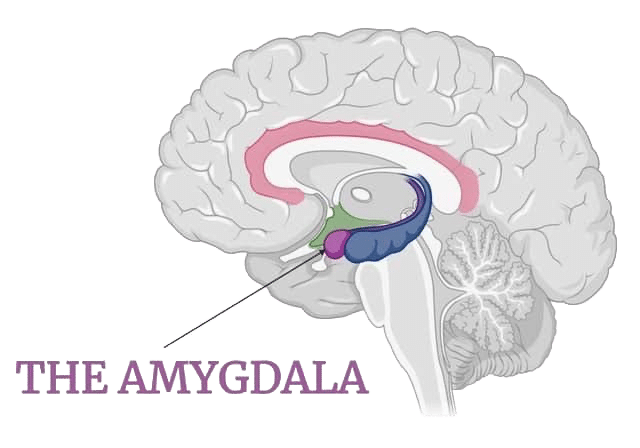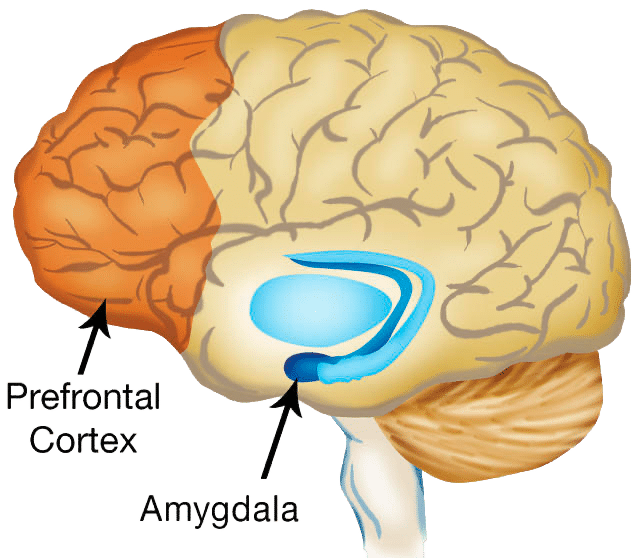This article will help us all deal with controlling emotions so we can live more peaceful & joyful lives.
My wife used to teach little children for many years. As it was a local school, I often knew the child’s family or siblings. I would watch with interest when a “problem” child I knew joined the phase of the school where my wife taught. It seemed to me that almost every child that battled with the curriculum or had behavioral issues battled with managing their intense emotions.
This wasn’t to say they didn’t have other complications. However, they all had a common problem with the self-regulation of their emotions. Pretty obvious right? But, if these kids had been able to possess or harness more emotional regulation, they would all have sailed through this preparatory component of their schooling.
Controlling emotions should more accurately be understood as how we react to circumstances. Science tells us that most emotions and feelings are caused or come from our thought processes. If this is the case, how we think will control most of our emotions and feelings. This means that we are not victims of circumstance; we have the keys to overcome emotions that aren’t helpful.
What does science say about controlling your emotions?

Firstly it must be said that MOST emotions are healthy. When you have studied hard and managed to ace a test, that smug, happy feeling you have, is both well-deserved and healthy.
We have been built with clear objectives. You will seek pleasure and good emotions (feelings) if you are mentally healthy. Usually this means we feel good when we have achieved or are experiencing situations fulfilling our purpose.
We also know how we react to many circumstances can be both harmful & even debilitating. This is not to say these emotions are destructive in and of themselves. Most of these emotions are trying to protect you, to keep you from harm. Let’s look at two parts of the brain that may help you manage your feelings.
The amygdala

The amygdala lives deep in our brain and consists of two small almond-shaped regions. “Amygdala” comes from the Ancient Greek word for “almond.” When faced with what we perceive as a negative or unsettling circumstance, the amygdala is the first to send messages to the rest of our body.
It is our alarm system telling us we may be in danger. Say you see something frightening; your amygdala might tell your body to panic. This can be good if you genuinely need to panic — but this response isn’t as helpful if you’re panicking in a situation that won’t harm you (like public speaking).
The prefrontal cortex

The prefrontal cortex is responsible for tasks requiring large mental effort, such as self-awareness, language, problem-solving, planning, learning, memory, etc.
This part of the brain also controls emotional balance, response flexibility, fear modulation, empathy, insight, moral awareness, and intuition.
These two sections of the brain work together to help you have control of your emotions. Combined, these two brain parts are responsible for most of our emotional self-regulation.
How some experiments may give us ways to deal with our emotions

Many peer-reviewed research papers have been written on this subject. One fascinating experiment that can help us was undertaken by the Frontier Research Laboratory, which has some interesting observations about human emotions:
Frontiers research laboratory asked people of all ages to look at images while in a fMRI machine. The first set of images was designed to create a negative emotion. They were then asked to change how they thought about the pictures. For example, they would show a picture of friends getting into a serious altercation. The advanced fMRI device took photos of the brainwave activity in this brain state. These volunteers were then asked to reframe these thoughts. Scientists asked the volunteers to pretend these friends were, in fact, acting, and that they were not angry with each other. Volunteers were asked how they would construct the pictures to make the scene look more realistic, what lighting they would use etc. They would get the volunteers to help direct the scenes to help with the reframing.
While the volunteers were changing their thoughts about the pictures, the MRI scanner took pictures of their brains.
Can we learn emotional control?

They learned that when the volunteers were shown pictures designed to trigger negative emotions, there was a significant increase in the brain activity of the amygdala. Brain cells within the amygdala responded to the images and immediately sent messages to other parts of the brain.
The incredible outcome of these experiments, is that activity increased in the volunteer’s prefrontal cortex when the volunteers started to think about the picture from a movie director’s perspective. This was followed by a decrease in activity of the amygdala. These experiments showed that the prefrontal cortex is turning down the amygdala’s response as the volunteers reframed the images in this new way.
What this means is that our brains can override negative thoughts. We have known this anecdotally for a long time. Still, it is very comforting to know scientifically that our brains have been designed to send both “fight or flight” signals when we need them and the ability to override this section of the brain. As our thoughts are responsible for our emotions and feelings, we get a glimpse into how we control our emotional experiences.
The limbic system & how it affects controlling emotions

The amygdala is part of the brain’s limbic system. Other parts of the limbic system include the hippocampus, which stores memories. When stressed or emotional, your limbic system works overtime to help your body process your feelings.
Because emotion and memory are so highly connected within the human brain, the limbic system also plays a part in memory, learning, and sexual arousal.
This almond-shaped amygdala (tiny compared to the rest of your body) helps you make big decisions and influences important behaviors. It’s linked to parts of your brain that control your thoughts — but it’s also connected to the more primitive, “fight-or-flight” stress response.
Tail-wagging the dog: Managing emotions needs to be intentional

The amygdala determines how we act in a crisis, depending on the information it receives. Mostly this is very helpful. Say you stepped into the road and missed observing a bus now about to knock you over. Incredibly, the tiny amygdala will get your body to move out of the way of the bus without you even thinking about it. The problem is that in modern society, the amygdala is often overstimulated. Why do we so easily let our anxiety outweigh the logical parts of our brains? We bombard our minds all day with problems. Work, traffic, finances, kids, time pressures, etc. All these add up in the amygdala column.
Over time we start developing unpleasant emotions and may not even know where they are coming from. Have you ever felt defeated before you even got out of bed? The day hasn’t even started yet, and you are battling to have control over your emotions.
Let us see how we can control our emotions better, even unpleasant feelings.
The science doesn’t lie

So, we know that if our brains are exposed to negative inputs – like in the experiment – our amygdala will take over more of the brain’s operation. We also know if we can reframe these inputs, we can get our prefrontal cortex to not only take over more brain operation, but also start shutting down thoughts generated from our amygdala.
There is much more to emotional regulation skills, but this is a good start.
If we follow the same design as the experiment, we need two things:
First: Reframing thoughts and difficult emotions

If we want to learn how to control or have better control of our emotions, we need to reframe the thoughts coming into our heads. We need to be mindful of what is being fed into our minds.
In a previous article, we discussed the critical starting point of understanding who you are. Reframing thoughts is a little easier if you understand how important, special, unique, and loved you are.
Your mind will constantly feed you negative thoughts; it will tell you you can’t do this, you will fail, you can’t repair that relationship, you aren’t good enough, you aren’t special, you don’t deserve that, etc. As we have seen above, our amygdala is only doing its job. It is trying to protect you from harm. The problem is that the amygdala is not only a part of the non-conscious or subconscious mind, but is also incredibly powerful.
Together, the amygdala and the limbic system will gather all the resources it needs to get you to listen. That is why it will constantly feed your mind what it thinks you need to hear – to protect you. It will even link these to memories to make the ideas more formidable.
Thought experiment

If you think thoughts can’t change your body & mind, let’s do a little thought experiment. Close your eyes and imagine yourself driving home from work. By mistake, you bump into the car in front of you. Some giant maniac gets out of this car and starts screaming at you, kicking your vehicle repeatedly. He then comes to your window and starts punching the window to get at you. If you get out, he will hurt you – very badly. Nobody is stopping to help, and you feel scared, alone, and vulnerable.
Now open your eyes and take a deep breath. Let your emotions get back under control. Do you see that your mind took control over so many bodily functions? It’s almost as if the mind didn’t know this wasn’t real. Maybe your heart rate increased, your hands got a little sweaty, or you still have that nervous feeling in your tummy.
Thoughts, even fake, false, and untrue thoughts, affect you.
Don’t let your emotions run riot, start managing your emotions

The key is to begin ‘catching’ these thoughts coming into your head. This is a skill that takes time to learn. If your mind has been preaching to you all your life, it is not something you may even be able to sense initially.
You may have to sit your body down, close your eyes, and start catching thoughts coming into your head. Maybe you are anxious. Start asking yourself why you are scared. Why do you have this tension in your back or stomach? Are you in immediate threat of danger? What is causing you to think these thoughts?
Don’t get angry at these thoughts. They are trying to protect you. Suppression of these thoughts isn’t the answer. Instead, run the complete idea through your head. You are anxious or scared because…
Analyzing your thoughts will improve your life

Acknowledge the thought, accept the thought, and try not to suppress these thoughts. Picture the worst-case scenario. Is it really as bad as you think? Really? Dive deep into these thoughts. Then start to analyze these thoughts. Maybe you think you don’t deserve something – we know this isn’t true. You are a unique and wonderful creation. You are special, loved, and God is looking out for you.
God knows you and wants you to live your absolute best life. It doesn’t matter what has happened in the past; the rest of your life starts now at this very moment.
Take each thought, and thank yourself for the thought, as it is only trying to protect you. Then analyze each thought. Is the thought true? Why do you believe the thought? Start reframing every single thought. This process takes time to learn. If you are serious about this process, you will get better and better at reading these thoughts coming into your mind. Reframing your thoughts is the first key to help you improve your life.
Discipline will help you manage your emotions

Eventually, it will be second nature. Every minute of the day, you will tell yourself that a negative thought that popped into your head is welcome but inaccurate. You will reframe these thoughts, give yourself the truth, and begin preaching to yourself. We know thoughts create emotions. This catching of the thoughts & then preaching to yourself will give you a grasp on your emotions. This mindfulness will ultimately provide you with healthy ways to victory.
Uncomfortable emotions will start to take a back seat. You will be able to begin to control emotions and respond with truth. Emotions play such a critical part in our day. If you can get a grip on controlling your thoughts, you will start to regulate your feelings; you will be able to keep your emotions in check. Push them back into the small corner where they belong.
Your self talk and controlling your emotions

The reframing of your thoughts is so important. Do yourself a favor, get good at analyzing each thought, and then reframing the thought with the truth. If you can learn to analyze your thoughts better and then reframe these thoughts, you are well on your way to a healthy emotional daily state.
Give yourself some space; this is a learned skill and will take time. Eventually, you will understand why you’re feeling angry, why you can’t control your feelings, or even why you can’t make them go away. This process, done over and over again throughout your day, will help you understand your emotions. Get very good at talking to yourself, and learn how to stay observant of your thought life. This effective self-regulation will help everyone control their emotions, even unpleasant emotions.
Second: What else did this experiment teach us?

In the experiment, the genesis of the negative feelings was when the volunteers were shown disturbing or harmful images.
What does this tell us? Yes, you guessed it, stay away from harmful inputs. If you want the emotional intelligence of successful, happy people, then ditch things that can hurt you. Start with yourself.
Stop reading the news, watching hurtful programs, and listening to damaging podcasts.
Then extend this a little further out. Do you have a close friend or a family member who is constantly negative? Maybe they are even good company. Sometimes hanging out with negative people makes us feel good. Ultimately though, these types of people will damage you. Try to limit time with these people.
Start listening to podcasts, reading books, or watching YouTube videos that feed your mind. Find people you like who will encourage, lift and challenge you. Do this every single day, as often as you can, and meditate on positive ways to change your mind.
5 ways to gain control or regulate your emotions

Controlling your emotions
Firstly: Journaling. I have a small journal where I write things that worry me at the beginning of the day. I pray about these things and leave these details in God’s hands for the day. At night I then write down how the day turned out and what happened with these “problems.”
You will be amazed how many issues are sorted out or never even hit the radar. It is genuinely incredible. This small act that takes 10 mins a day max gives you so much confidence to face each day. It also gives you the ability to live in the now. These details are today, what happened today. This soon becomes a type of ‘mood journal’. Helping me to develop emotional memories and experience emotions, positive ones, before I go to bed.

Controlling your emotions
Secondly: Prayer. This is linked with journalling. The Bible tells us to bring EVERY single thing that concerns us to God every day. What a blessing, we can bring every little issue to the creator of the universe, and he won’t get bored. He wants to speak to us.

Controlling Emotions
Thirdly: Gratefulness. The Bible also commands us to be grateful. Before you get out of bed, thank God that you are alive, He has given you another day. The thing with gratitude is that you may not want to practice gratitude. Maybe you have such strong emotions or overwhelming emotions of despair that thanking God for the day is the last thing on your mind. This is precisely WHY you need to begin this practice. Combine this with prayer. You will be amazed over time how your mind and emotions start to change. Force yourself if you have to.

Controlling emotions
Fourthly: Inputs. Find great material that feeds your mind. Material that teaches you the truth. Inspiring and uplifting material. Challenging material. You need to do this every day for the rest of your life. Your subconscious mind works off repetition, and you must feed it the correct information daily. Eventually, your subconscious will naturally return these thoughts to your mind, giving you good emotional regulation.

Emotions and feelings
Fifth: Catching thoughts. As mentioned above, this is the key. This takes discipline, not just accepting your thought pattern. Instead of reacting to your emotions, this is how to manage negative feelings. You have the keys to control your emotional state. Develop the ability to identify ‘natural’ thoughts that aren’t useful to you, bring them out into the open, and deal with them. This will not only result in ways to deal with negative emotions, but it will build healthy & powerful emotions that will play a key determinant on your ability to manage your emotions in stressful situations.
Conclusion
We want to build emotional control of our lives. When you’re feeling down, force yourself to start analyzing your thoughts. The emotions you’re feeling can be controlled. What a joy to know we can control how to manage our emotions.
We can regulate emotions. We can learn to generate a positive emotional response even in unhelpful circumstances. Emotions can also be so helpful and powerful with even our physical health.
You have got to love science!
I have found that learning how to easily bring in more money each week, has helped with my mental health. Options must be one of the easiest ways to take control of your money. Learning how to use options to manage my own finances instead of handing over the responsibility to a money manager has been liberating. Click below for a FREE ‘Options for Beginners course.’
Start to learn how to manage your own money.






[…] Do you know how liberating it is when you start to generate some additional income because you decided never to stop learning? You stopped, disciplined yourself, and decided what was important to learn to move you forward. You implemented the game plan you came up with and put all your eggs in one basket, and took some risks. What a feeling! […]
[…] a previous article, we spoke about how our thoughts will always tell us things like – we can’t do this, we […]
[…] can to stop you from taking risks, to stop you from moving outside of your comfort zone. I wrote an article for a more in-depth reasoning on why your mind does this. For now, let’s look at a simple […]
[…] wrote an article on controlling your emotions, where the brain’s limbic system can override negative emotions, which you may find helpful. […]